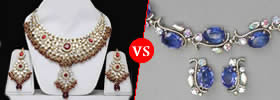Difference between Oat and Wheat
Key difference: Oats have become a popular breakfast grain due to their many healthy properties. With the shift towards healthy living, almost everyone has either heard of oats or has incorporated oats into their diet. Avena sativa or oats is a species of cereal grain that is grown for its seed, also known with the same name. Wheat, belonging to the Triticum genus, under the Plantae kingdom is also a member of the grass family and is considered as a cereal grain.
 Oat and wheat are two common types of grains that are part of the grass family. These are a common part of our daily diet. While both wheat and oats have been a popular part of the human diet for ages, oats have recently gained further popularity for being the healthier option. See the difference Corn and Maize.
Oat and wheat are two common types of grains that are part of the grass family. These are a common part of our daily diet. While both wheat and oats have been a popular part of the human diet for ages, oats have recently gained further popularity for being the healthier option. See the difference Corn and Maize.
Oats have become a popular breakfast grain due to their many healthy properties. With the shift towards healthy living, almost everyone has either heard of oats or has incorporated oats into their diet. There are various different types that oats have been launched into the market.
Avena sativa or oats is a species of cereal grain that is grown for its seed, also known with the same name. Oats belong to the same classification as wheat, rye, barley and are a popular breakfast cereal in many parts of the world. Oats grow in temperate regions and have a lower summer heat requirement. They are also very tolerant and are able to thrive in poor soil conditions, where other crops die. They can also grow in wet and cold weathers, such as Northwest Europe. Oats were primarily considered as a weed before it was eventually domesticated.
Oats has various uses in addition to being used as a breakfast cereal. Oats were originally used as livestock feed and were a part of a daily diet of domestic horses, cattle and chickens. It is also used in some brands of dog and cat food. Oats are also known as cat grass, as cats enjoy eating tender young oats. Oats can also be ground into flour, which can be used in porridge, oatcakes, oatmeal cookies, and oat bread. Oats are also used in muesli (a breakfast dish) and granola bars. In some European countries, oats are used for brewing beer. Oats can also be used as horse or cattle bedding, as it is soft, dust-free and has an absorbent nature. Oats are also known to soothe skin conditions and are found in a few cosmetics, as well as used for medicinal purposes. See multigrain Vs. whole grain Vs. whole wheat.
There are various different ways that oats are milled, packaged and sold:
- Rolled Oats: Rolled oats are whole grain oats that are flattened by steel rollers to make it faster to cook. This can be further divided into thick rolled and thinly rolled, where thick rolled are just thicker in size.
- Quick Oats: These oats have been cut into small pieces before they are flattened make them even faster to cook than rolled oats.
- Instant Oats: Instant oats are quick oats, which are previously steamed and then packaged. The consumer just has to add hot water in order to get it ready.
- Oat Groats/Scottish Oats/Steel Cut Oats: These oats are closest to the whole grain oats. The oats groats are cut into small pieces with steel blades and packaged.
- Oat Bran: Oat bran is similar to wheat bran that is separated from the oats and packaged and sold separately.
Oats, in any form, are very healthy food and are an excellent source of thiamine, iron, and dietary fiber. Whole oats are also the only source of antioxidant compounds known as avenanthramides, which are believed to help protect the circulatory system from arteriosclerosis. Oats also play an important part in lowering cholesterol levels in the body, preventing heart failure, enhancing the immune system, stabilizing blood sugar, lower risk of Type 2 Diabetes, etc.
 Wheat, belonging to the Triticum genus, under the Plantae kingdom is also a member of the grass family and is considered as a cereal grain. Wheat is also one of the first cereals that have been domesticated along with barley. It was also easy to domesticate because of its ability to self-pollinate. Wheat originates from the Levant region of the Near East and Ethiopian Highlands. See the difference Barley Vs. Wheat.
Wheat, belonging to the Triticum genus, under the Plantae kingdom is also a member of the grass family and is considered as a cereal grain. Wheat is also one of the first cereals that have been domesticated along with barley. It was also easy to domesticate because of its ability to self-pollinate. Wheat originates from the Levant region of the Near East and Ethiopian Highlands. See the difference Barley Vs. Wheat.
There are various different kinds of wheat species including wild wheat, einkorn wheat, and common wheat. Common wheat is the wheat that is most popularly used worldwide and its scientific name is Triticum aesativum. It is a hexaploid, which contains six sets of the chromosome. It is the third most-produced cereal in the world, according to a 2010 studies. Wheat can be planted in two seasons, spring (known as spring wheat) and winter (known as winter wheat). Wheatgrass can grow between 2 and 4 feet tall. It resembles other grass cereals, with a tall stalk that ends in a tightly formed cluster of kernels close to the top. When wheat matures, the stalk usually bends due to the weight of the kernels.
Wheat is used in various applications around the world. The most common usage of wheat includes as a staple food in many countries such as flour and bread. It is also used as mulch, construction material, fermentation of distilled alcoholic beverages, biofuel and animal bedding. Wheat can be consumed in three different forms, the most commonly known as white wheat, where the whole wheat is stripped down to the endosperm, removing the bran and the germ. The bran and germ can be packaged and sold separately. Wheat that is not stripped and sold whole, with bran and germ is known as whole-wheat and offers the most health benefits.
Wheat offers protein, fat, carbohydrate, dietary fiber, iron, magnesium, vitamin B, folate, calcium, manganese, zinc, potassium, and starch. It is said to offer health benefits such as fewer carbohydrates, helps reduce the risk of metabolic syndrome, type 2 diabetes, lessens chronic inflammation, helps prevent gallstones, provides protection against breast cancer, etc.
Difference between Oat and Wheat:
|
|
Oat |
Wheat |
|
Kingdom |
Plantae |
Plantae |
|
Order |
Poales |
Poales |
|
Family |
Poaceae |
Poaceae |
|
Subfamily |
Pooideae |
Pooideae |
|
Genus |
Avena |
Triticum |
|
Types |
Oat, wild oats, oatmeal, and rolled oats Around 12 species |
Common wheat, Spelt, Durum, Emmer and Einkorn |
|
Uses |
Rolled or crushed into oatmeal, ground into fine oat flour, variety of baked goods, cereals like muesli and granola, brewing beer, feed for horses, skin conditions, animal bedding, and some medicinal purposes. |
Bread, flour, mulch, construction material, fermentation, biofuel and animal bedding. |
|
Nutrition |
Carbohydrates, dietary fiber, fat, protein, folate, calcium, iron, magnesium, potassium, and pantothenic acid. |
Protein, fat, carbohydrate, dietary fiber, iron, magnesium, vitamin B, folate, calcium, manganese, zinc, potassium and starch. |
|
Plant disease |
Oats are relatively free from diseases and pests with the exception being leaf diseases, such as leaf rust and stem rust. A few lepidopteran caterpillars feed on the plants but these rarely become a major pest. |
There are many diseases that can be caused by fungi, bacteria, and viruses. Many diseases that can infect the plant have been categorized into seed-borne diseases, leaf- and head- blight diseases, crown, and root rot diseases and viral diseases. Birds, animals, rodents, and insects can also cause damage to the crop by eating newly planted seeds or new crops. |
|
Health benefits |
A health food considered to reduce lower LDL (bad) cholesterol, and possibly the risk of heart disease. Oats, after corn (maize), have the highest lipid content of any cereal. Oat protein is nearly equivalent in quality to soy protein, which World Health Organization research has shown is equal to meat, milk, and egg protein. |
The health benefits of wheat depend on the form that it is consumed in. wheat is most beneficial in its whole form, known as whole wheat. whole wheat has fewer carbohydrates, reduces risk of metabolic syndrome, risk of type 2 diabetes, lessens chronic inflammation, helps prevent gallstones, provides protection against breast cancer, etc. |
Image Courtesy: enchantess.com, purcellmountainfarms.com









Comments
Sadia Zainab
Sun, 12/18/2016 - 19:29
mary
Tue, 06/27/2017 - 11:21
Any reliable lab tests to show and prove the nutritive components? A bit of specifics and not vague contents. Preferably not from an American source. Not that I have any grudge against Americans, but certainly oats should not be told to be better because it is grown in USA and not in India.
Hemant
Tue, 08/19/2014 - 14:04
Abdul
Sat, 08/15/2015 - 12:46
Add new comment